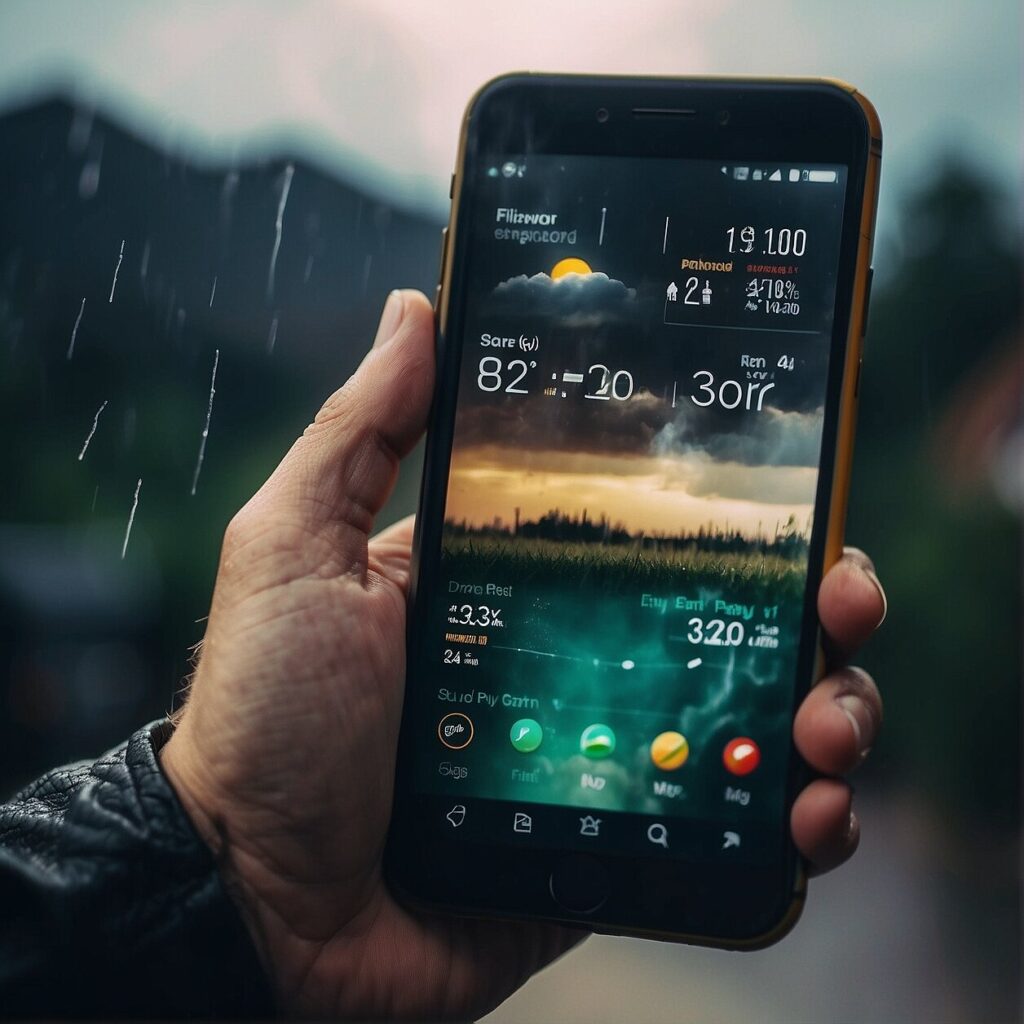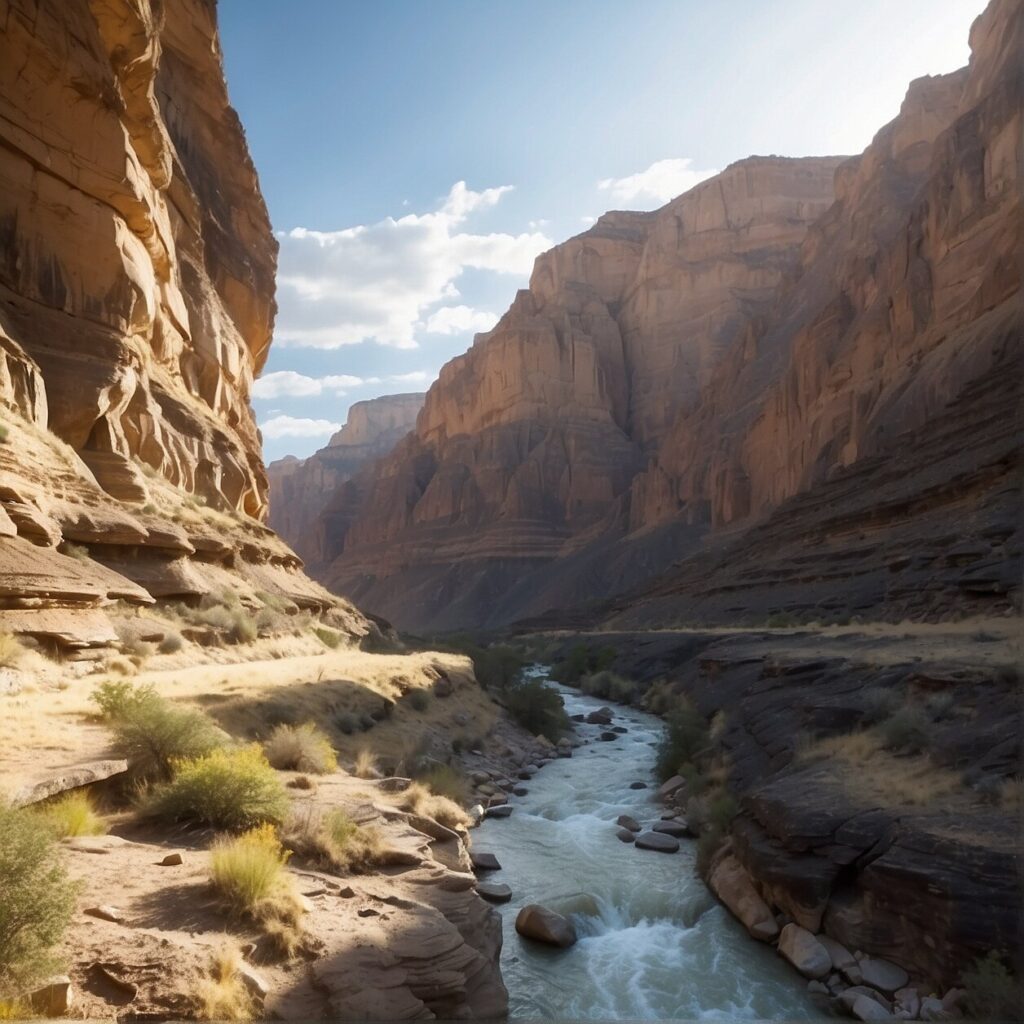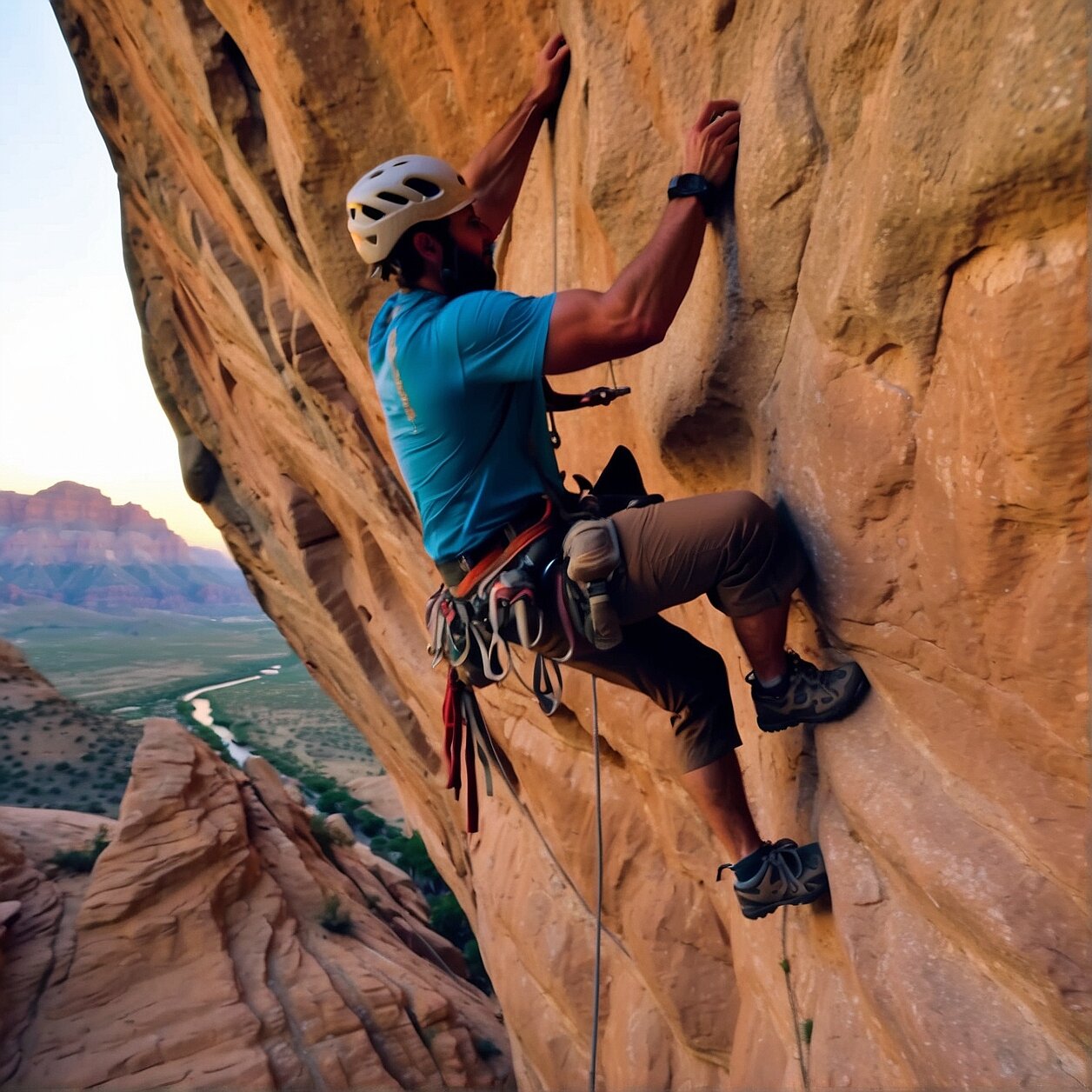Rock Climbing in Utah’s Remote Canyons: A Comprehensive Guide
Utah, a realm of stark beauty, breathtaking landscapes, and a veritable playground for outdoor enthusiasts, has long been a favorite among rock climbers worldwide. A place where nature’s rugged drama unfolds in a grand display of towering canyons, meandering rivers, and the seemingly impossible design of gravity-defying rock formations. It provides an irresistible allure for those who have a penchant for adrenaline-pumping experiences.
“Climbing in Utah’s remote canyons is not just about reaching the summit. It’s a journey of discovering your untapped potential, confronting challenges, and experiencing freedom on an unusual vertical playground.”
Whether you’re a seasoned pro or merely considering your first steps into this exhilarating adventure, Utah’s remote canyons offer an array of climbing routes, each with their unique challenges and rewards. This wonderland of rock, with its numerous nooks and crannies, calls out to adventurers, offering an unrivaled rock-climbing experience.
So, ready to unlock the secrets of Utah’s remote canyons with your own hands and feet? This guide is your essential companion. From understanding the best routes, choosing the right gear, to ensuring your safety and knowing when to go – we’ve got it all covered. Let’s embark on this thrilling journey, together.
Unveiling the Hidden Gems: Top Rock Climbing Routes in Utah’s Remote Canyons
Unfolding like a rough, stonebound parchment, Utah’s remote canyons present climbers with layer upon layer of sandstone beauty. Each climbing route here is an adventure woven into the rugged cliff faces and secluded crannies these canyons offer. Let’s dive in and explore a few.
The Indian Creek is an undeniable classic. Fondly known as a haven for crack climbers, the routes here offer an immersive, if humbling, challenge for climbers with even the most seasoned skill sets. The Supercrack of the Desert—a breathtaking 100-foot splitter crack—stands as a signature route here.
Next up, is the Crescent Crack found in Little Cottonwood Canyon. Offering a visually striking line up the granite buttress, this climb features a distinctive mixture of crack climbing and friction slab. Whether you’re a traditional stalwart or a sport climbing enthusiast, Crescent Crack provides an electrifying and varied climbing experience.
However, for those yearning for a taste of the unexplored, there’s the remote San Rafael Swell. Quiet, expansive and virtually unmarked, this magnificent canyon system offers a collection of diverse climbing routes. With its sandstone walls and lengthy cracks, each climb here is a plunge into the unknown—a unique thrill only Utah can offer.
Remember, while the allure of the climb is thrilling, being prepared for these adventurous ascents is crucial. Be aware of the route grades, always use proper gear, and never underestimate the importance of safety measures.
So, strap on your climbing shoes, check your gear, and get ready to explore these unforgettable climbing routes nestled in the heart of Utah’s remote canyons.
Choosing the Right Path: Navigating Through Utah’s Remote Canyons
Navigating through Utah’s intricate canyons is as much a thrill as it is a beautiful mystery wrapped in sandstone walls. With routes that thread through these elaborate natural mazes, choosing the right path can be both challenging and rewarding.
Each canyon offers its own unique experience. Some have paths that lead directly to towering rock formations—perfect for those ready to dive right into climbing. Others, however, favor the path of adventure, requiring you to hike and scramble through rocky terrain before reaching the climb.
To navigate these canyons successfully, it’s essential to have a robust understanding of the landscape. Detailed maps are of immense value, providing extensive topographic information to guide you. A smart trick is to always note recognizable landmarks. These can serve as useful check points keeping you on track.
An equally important part of navigating through Utah’s remote canyons is understanding and respecting the weather. Sudden downpours can quickly flood canyons, making them treacherous. Always check the weather forecast before setting out, and be prepared to alter your plans if conditions turn unfavorable.
Lastly, remember that cell phone service can be spotty, at best, out in these remote areas. Invest in a good GPS or compass, and learn how to use them. They can be your lifeline in ensuring a safe and successful canyon navigation. >In conclusion, navigating Utah’s remote canyons is like a thrilling treasure hunt. Armed with the right knowledge, adequate preparation, and a healthy respect for nature, you’ll be well on your way to an incredible rock climbing adventure.

Pack Your Gear: Essential Equipment for Rock Climbing Utah’s Canyons
When it comes to rock climbing, packing your gear appropriately is as important as picking the right trail. Here are some crucial items you should not overlook.
1. Climbing Shoes
A pair of good rock-climbing shoes can make a significant difference. These are designed to endure rugged terrain, offering the much-needed grip while keeping your feet snug and comfortable. Don’t skip on trying a handful before selecting the one that fits you perfectly. Remember, your feet will carry you to the summit, so they deserve some pampering.
2. Rope, Harness, and Belay Device
Your rope is your lifeline, literally! Invest in a durable, high-quality climbing rope. Match it with an adjustable harness that you can move around comfortably in, and a reliable belay device. This trio is fundamental to every successful rock climb, so don’t compromise on their quality.
3. Helmet and Gloves
Never forget the fact that safety matters above all, and a sturdy helmet is non-negotiable for that reason. Similarly, gloves protect your hands from bruises, cuts, and chafings. Go for durable materials that offer proper insulation and flexibility.
4. Chalk and Chalk Bag
The often – climbing chalk and chalk bag. They provide the-over gear yet significant extralooked grip on your palms, preventing sweaty hands from slipping off. Easy to carry, chalk can be a real game-changer on those demanding high climbs.
5. Personal Anchor System (PAS) and Quickdraws
Your PAS and Quickdraws will aid in navigating through the climbing routes, assisting you with easy and safe ascent. Make sure to learn how to use these gear pieces efficiently before starting your journey.
Remember, rock climbing in Utah’s remote canyons is an exhilarating endeavour only when performed with safety. Be well-prepared and enjoy the journey up!
Safety First: Precautionary Measures for Rock Climbing in Utah’s Canyons
As thrilling as rock climbing can be, it undoubtedly bears considerable risk. Passion for the sport should never override the importance of safety – it needs to be your top priority, especially when climbing Utah’s rugged, remote canyons. Here’s how you can ensure a safe climbing adventure.
6. Start with a Safety Check
It’s crucial to verify the state of your gear before you start climbing. Inspect your harnesses, ropes, and other equipment for any sign of wear and tear that could compromise their effectiveness. And remember, climbing solo is a risk best avoided. Always have a climbing partner who can assist in case of emergency.
7. Stay Hydrated
With Utah’s arid climate, dehydration can occur rapidly. Carry a sufficient amount of water with you, and remember to drink frequently. Consuming snacks that are high in electrolytes will also aid in maintaining your hydration levels.
8. Be Weather-Wise
Never underestimate the might of Mother Nature. Keep a close eye on the weather forecasts before and during your trip. Abrupt changes, such as storms or heatwaves, can make climbing dangerous and should be met with a swift return to base.
9. Warm-Up and Cool Down
Before you start your ascent, warm up your muscles with some light exercises to minimize the chances of injury. After climbing, perform cool-down exercises to help your body slowly return to a restive state, which also assists in muscle recovery.
10. Know Your Limitations
Pushing yourself is one thing, but remember, it’s okay to back down from a climb if it feels too challenging. The canyons will always be there for you to conquer another day. Your safety and well-being come first.
By implementing these safety measures, you can embrace the thrill of rock climbing amid Utah’s awe-inspiring canyons with a more robust sense of security.

Season Wise: Best Times to Go Rock Climbing in Utah’s Remote Canyons
The season plays a pivotal role in determining the comfort, safety, and overall enjoyment of rock climbing in Utah’s remote canyons. The gateway to a joyful climbing experience hinges on understanding the nuances of Utah’s climate and planning accordingly.
Fall, specifically from September through November, is widely heralded as the prime season for rock climbing in Utah. The scorching summer heat mellows into mild, warm temperatures, creating optimal conditions for climbers. Additionally, the chances of encountering rain are comparatively low, which is crucial as climbing on wet sandstone can be hazardous and cause irreversible damage to the rocks.
Spring, from March through May, is another favorable time, with a caveat to keep an eye out for flash floods. Canyon walls warm up quickly during the day, and the chilly nights make for spectacular camping experiences. However, do keep informed about the weather patterns, as sudden thunderstorms are common during this period.
Summer is typically a bit challenging owing to the intense heat, especially in July and August. If you choose to venture during this period, planning early morning or late evening climbs and staying hydrated is key. Certain areas located at higher altitudes might offer more favorable conditions.
Winter brings a unique charm of its own. With sparse crowds, climbers can savor the solitude of the canyons. It’s generally cool but sunny during the day, although nights can get chilly. Ice gear is advisable for certain routes, and always be prepared for potential snowfall or icy conditions.
Ultimately, the best time to go rock climbing in Utah’s remote canyons varies depending on your individual preferences and tolerance levels. Just ensure that you’re equipped with adequate knowledge and gear before you embark on your adventure.
FAQ’S
As we move towards the conclusion of our guide on rock climbing in Utah’s remote canyons, it’s normal for you to have some questions swirling around in your head. In this section, we’ve compiled various frequently asked questions that tackle everything from Utah’s popularity among rock climbers to insights on fitness, safety, and sightseeing. Let’s delve into these questions to further enrich your understanding and prepare you for a thrilling adventure!
Why is Utah a popular destination for rock-climbers?
Utah is a renowned destination among rock climbers due to its remarkably diverse and scenic landscapes. From the towering sandstone cliffs of Moab to the rugged limestone walls in American Fork Canyon, Utah offers diverse geological formations that appeal to climbers of all skill levels. Furthermore, the state provides challenging overhangs, perfect cracks, and dizzying heights that promise both thrilling adventure and spectacular views.
What kind of wildlife can I encounter while rock climbing in Utah’s remote canyons?
These remote canyons are home to a rich array of wildlife that you might spot on your climbing adventure. Rabbits, lizards, and deer are common sights, along with various bird species. If you’re lucky, you may even spot a mountain lion or a bear from afar. However, always remember to keep a respectful distance from all wildlife and never feed wild animals. Act responsibly to ensure we can all continue to enjoy these delightful encounters.
Are there any specific rules or regulations for rock climbing in Utah’s canyons?
While rock climbing is widely permitted across Utah’s public lands, some areas may have specific rules or permit requirements. It’s essential to respect all regulations and land management practices to preserve the natural beauty of these climbing areas for future climbers. Always maintain a minimal-impact approach, stay on established trails, and strictly follow the ‘leave no trace’ principles. The utmost respect for nature ensures everyone can enjoy the climbing experience, today and tomorrow.
Which remote canyons in Utah are ideal for beginner rock climbers?
While Utah’s climbing routes come in all levels of difficulty, some are more suitable for new climbers. Indian Creek, for instance, is a favorite among beginners due to its abundance of moderate routes. Another excellent choice is Little Cottonwood Canyon, where numerous guides and schools cater to beginners. Regardless of where you choose to start, remember that every climbing journey begins with a single step, or rather, a single hold.
How can I prepare for rock climbing in Utah’s remote canyons?
Climbing the remote canyons of Utah requires both physical and mental preparation. Your body must be in good shape to endure the demands of steep rock faces. Regular cardio workouts, weight training, and core strengthening exercises will maintain fitness levels. Climbing-based exercises, such as wall-climbing, pull-ups, and leg raises, can specifically train the muscles you’ll be using the most.
The art of climbing also involves developing mental acuity. Start by studying the rock layout. Learning how to read a route will make your climb more efficient and less exhausting. Understanding basic climbing knots and techniques is equally important. Joining a rock climbing class or club in your area can be a great way to gain these skills and meet experienced climbers who can offer advice.
So what are the specifics you need to consider? Understand the climate and weather patterns of Utah’s canyons. Temperatures in the desert can both soar high during the day and plunge at night. Pack clothing that can keep you warm, but at the same time is breathable for when temperatures rise.
Additionally, make sure you’re thoroughly prepared with the right equipment. This includes but isn’t limited to, sturdy climbing shoes, ropes, harnesses, a helmet, and a well-stocked first aid kit. Check all equipment before departure to ensure it’s in working order.
Hydration and nutrition are paramount. Pack ample water and energy-packed snacks. Dehydration and fatigue can hinder your climbing performance and compromise your safety.
Remember, training and preparation take time. So give yourself sufficient time to prepare before embarking on your rock climbing journey in the spectacular, yet challenging terrain of Utah’s remote canyons.
What are some tips for beginners rock climbing in Utah’s remote canyons?
Stepping into the exhilarating world of rock climbing? Great! Utah’s remote canyons are a perfect playground for beginners. Here are some practical tips to keep in mind.
Embrace the learning curve: Beginners often find rock climbing daunting. However, remember that every master was once a beginner. Approach climbing with patience; learn and grow with every climb.
Choose beginner-friendly routes: Don’t jump into complex routes right away. Begin with simple routes, preferably with a gentle incline and multiple handholds, to build your skills and confidence.
Attend rock climbing workshops: Utah hosts various workshops and guided climbing trips, specifically designed for beginners. Attending these would provide a solid foundation, ensuring you learn proper techniques and safety precautions.
Invest in the right gear: While it’s tempting to save money on starter kits or buying second-hand, investing in good quality gear from the outset is wise. Your comfort and safety depend on it.
Practice communication: Communication is key in climbing, especially in team climbs. Learn the common climbing phrases and commands and make sure you have understood their meanings.
Hire a guide: If you can, hiring a guide for your first few climbs can be incredibly helpful. An experienced guide can introduce you to local rock character, suggest suitable routes, provide expert insights, and ensure your safety.
Remember to enjoy the journey as much as making it to the top! Share your experiences, learn from the climbing community, and fall in love with the vast landscapes of Utah’s canyons.
How can I stay fit for rock climbing in Utah’s remote canyons?
Fitness for rock climbing involves both physical and mental preparation. It’s crucial to build strength, flexibility, and endurance to efficiently scale the rugged terrains of Utah’s remote canyons.
A well-rounded fitness regimen that involves cardiovascular activities, strength training, yoga for flexibility, and balance exercises should be the cornerstone of your fitness journey. Regular jogging or cycling can boost your cardio fitness, while resistance workouts with weights or bodyweight exercises – think push-ups, pull-ups, and squats – can significantly improve your overall strength.
Climbing requires a considerable amount of upper-body strength, but don’t underestimate the power of your legs! Incorporate lunges and calf-raises into your routine to strengthen those leg muscles, too. Yoga and Pilates can be great for building flexibility and balance, key components to a successful climb.
Besides physical fitness, mental endurance warrants equal attention. Hence, practicing mindfulness and getting rid of fear and anxiety can be advantageous. Remember, rock climbing isn’t just about reaching the peak; it’s about enjoying the climb too.
Should you have the chance, we would recommend indoor or outdoor climbing sessions considering they are the best way to condition your body and mind to the unique demands of climbing. Regardless of your fitness level, remember to begin each session with a warm-up to prep your muscles for activity and end with stretches to aid recovery.
Finally, ensure to have a balanced diet rich in protein for muscle recovery and carbohydrates to fuel your climbs. Also, keep a regular schedule – consistency is key!
Remember, always consult with a healthcare professional before starting any new fitness program to ensure it suits your individual health circumstances.
What are the risks involved in rock climbing in Utah’s remote canyons and how can they be mitigated?
Participating in the thrilling activity of rock climbing is not devoid of certain risks. Utah’s remote canyons, stunning as they are, pose their own unique challenges. Crevices can be unstable, weather conditions change rapidly, and the remoteness of these locations can make help hard to reach in the event of an accident. However, don’t be deterred; with wise decision-making, careful planning, and the right safety measures, these risks can be significantly mitigated.
Navigating unstable terrain is a challenge. To tackle this, stay updated with geological surveys and follow recommendations from experienced climbers about areas with degraded rocks that should be avoided. Always investigate the integrity of your holds before you put your weight on them.
Changing weather conditions can turn a pleasant climb into a nightmare. To mitigate this risk, maintain a close watch on weather updates before and during your climb. Lightning, rain, and wind drastically increase the risk of accidents, so it’s necessary to postpone or cancel your climb if extreme weather is forecasted.
The remoteness of canyons implies less immediate access to emergency services. When mapping your route, pinpoint emergency exit points and keep medical emergency numbers handy. Go in groups or inform people about your plan and estimated return time. Carrying a first-aid kit with you is central to this — include bandages, antiseptic wipes, tweezers, and any personal medications you may need.
Finally, remember that rock climbing is as much about mental stamina as it is about physical. Keep yourself calm, stay focused, observe your surroundings, and make decisions carefully. Utah’s remote canyons, with their towering rock walls and stark beauty, will reward you amply for your caution.
What are some must-see sights when rock climbing in Utah’s remote canyons?
Utah’s remote canyons offer not just thrilling climbing routes, but also jaw-dropping, scenic panoramas that you absolutely can’t afford to miss. As you maneuver these rocky terrains, be sure to keep an eye out for some of these stunning sights.
First off, the majesty of the Indian Creek deserves a special mention. Known as a trad climber’s paradise, the mesmerizing series of vertical cracks against the backdrop of red sandstone cliffs is a sight that will forever be etched in your memory. Complementing the awe-inspiring scenery are the awe-striking sunsets that paint the sky in shades of fiery orange and pink.
Equally breathtaking is the Castle Valley with its distinctive tower-like formations. The views from the top of the Castleton Tower are nothing short of magical. The vast of expanse greenery dotted with rugged red rock formations are a stark contrast and a delight to the eyes.
Meanwhile, the mysterious Moonflower Canyon teems with bizarre rock formations and petroglyphs. It presents a treasure trove of antiquity for explorers, with its cliffs boasting a rich collection of Native American rock art.
The dramatic landscapes of Big Cottonwood Canyon offer another enchanting sight. The Granite Walls adorned by the splendid Wasatch Mountain range provide a beautiful backdrop as you climb.
And finally, the diverse sculpted rock layers of Zion National Park displaying hues of red, pink, and cream are a feast for the eyes. They perfectly embody the rugged beauty that Utah’s canyons are renowned for.
While challenging yourself on these climbs, always take a moment to soak in the beauty around you. After all, the joy of rock climbing in Utah’s canyons isn’t just about conquering crags; it’s also about the amazing sights that accompany your journey. Make sure to carry a camera or a GoPro to capture these unforgettable vistas!







